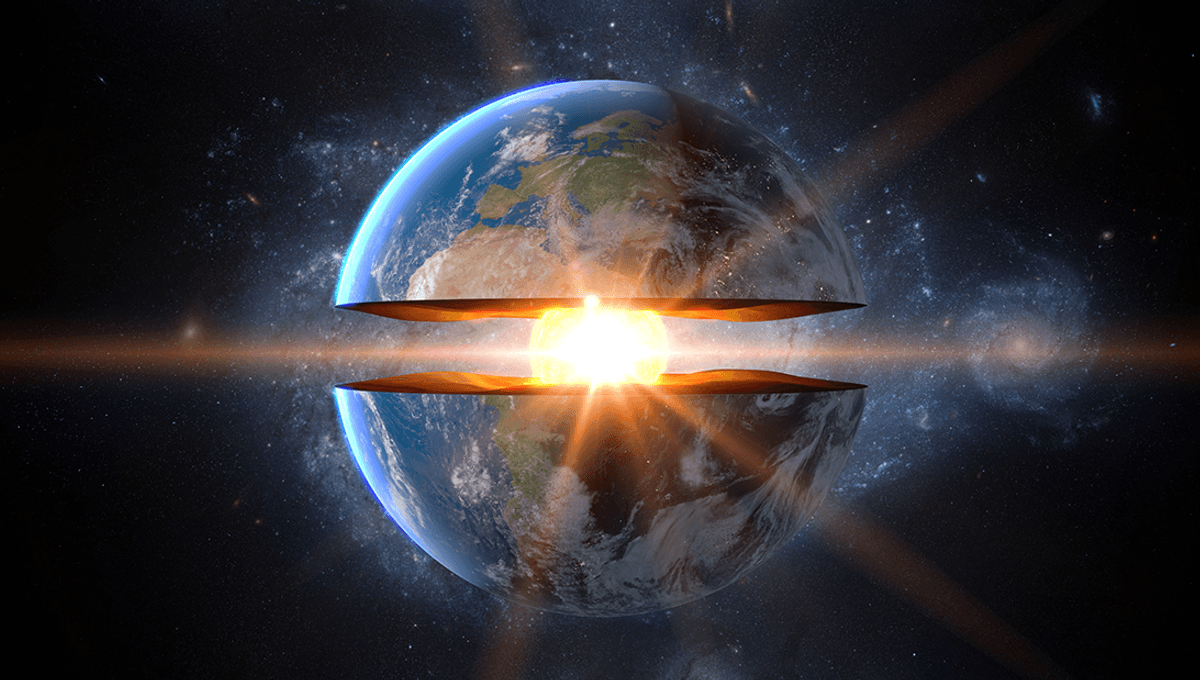
In the 1960s and 70s, the US and Soviet Union conducted a number of nuclear tests. While devastating for the immediate environment, and causing a future where wars could trigger an ice age, there has been a surprising upside: scientists have used them to study the Earth’s core.
There are of course no direct ways of seeing the Earth’s core, at least without being burned to a crisp or fighting your way through the mole people. The deepest hole we’ve ever dug – sweetly dubbed the “entrance to hell” – reached 12,263 meters (40,230 feet), still a long way from breaking through the Earth’s crust to the layers beneath. However, we can look under the surface pretty effectively by utilizing earthquakes in a technique known as seismic tomography.
When earthquakes occur, waves of energy are sent out in all directions. By measuring the tremors from several locations at the surface, scientists can create a map of the Earth’s interior. Since rocks and liquids within the Earth are of different densities, the waves move through them at different speeds, allowing geologists to figure out what type of material the waves are going through.
Scientists had proposed in the 1990s that the Earth’s core rotates faster than the other layers of the planet. In a 2022 study, researchers from the University of Southern California (USC) used wave data from the Large Aperture Seismic Array (LASA) in Montana gathered during underground nuclear bomb tests conducted by the Soviets in the Arctic archipelago of Novaya Zemlya from 1971-74. Using techniques they developed, they found that the core spun slower than previously predicted, at about 0.1 degrees per year.
The team then looked at data from tests conducted by the US near Alaska in 1969 and 1971, finding that the inner core had reversed direction, sub-rotating (i.e. going slower than the surface) a tenth of a degree at least per year.
“The idea the inner core oscillates was a model that was out there, but the community has been split on whether it was viable,” Professor of Earth Sciences at USC John E. Vidale said in a press release. “We went into this expecting to see the same rotation direction and rate in the earlier pair of atomic tests, but instead we saw the opposite. We were quite surprised to find that it was moving in the other direction.”
According to the team, the oscillation could explain fluctuations in the lengths of Earth’s days, which varies by about plus or minus 0.2 seconds on a six year cycle.
“From our findings, we can see the Earth’s surface shifts compared to its inner core, as people have asserted for 20 years,” Vidale said. “However, our latest observations show that the inner core spun slightly slower from 1969-71 and then moved the other direction from 1971-74. We also note that the length of day grew and shrank as would be predicted. The coincidence of those two observations makes oscillation the likely interpretation.”
The length of Earth’s days are more variable than you’d assume, unless you’re keeping a very close eye on your very accurate clock. There are all sorts of factors that affect the speed of rotation, such as changing sea levels and earthquakes, though the biggest factor is that the Moon is moving away from the Earth (who can blame it) – as the two bodies interact, the result is the Earth slowing down, albeit with bursts of speed every now and then. This research suggests the inner core is a factor in the length of our days too.
“The inner core is not fixed – it’s moving under our feet, and it seems to going back and forth a couple of kilometers every six years,” Vidale added. “One of the questions we tried to answer is, does the inner core progressively move or is it mostly locked compared to everything else in the long term? We’re trying to understand how the inner core formed and how it moves over time – this is an important step in better understanding this process.”
Source Link: Scientists Used Underground Nuclear Explosions To Study The Earth's Core